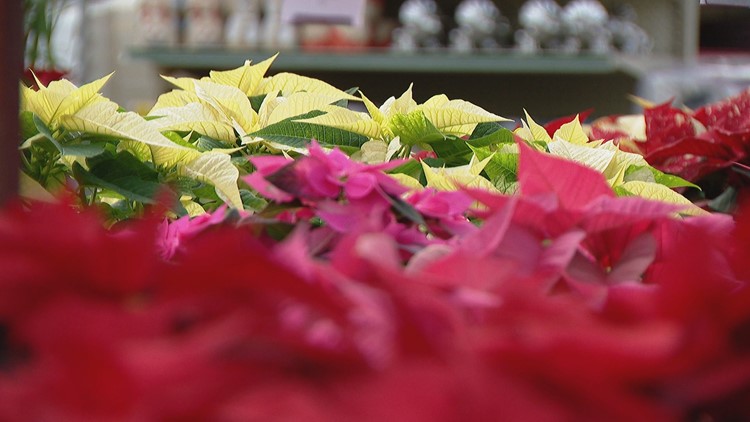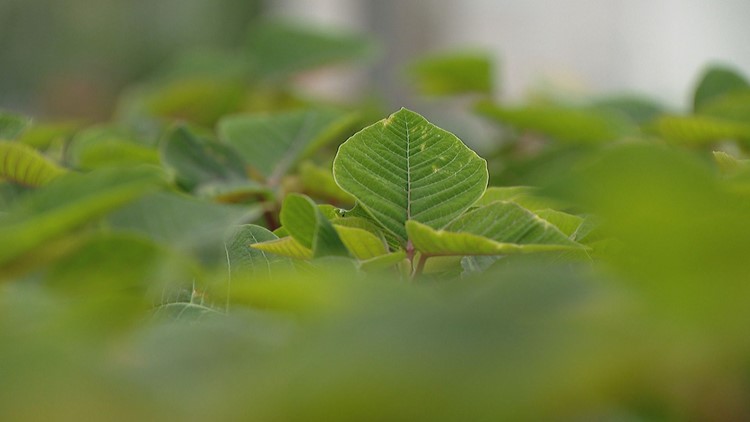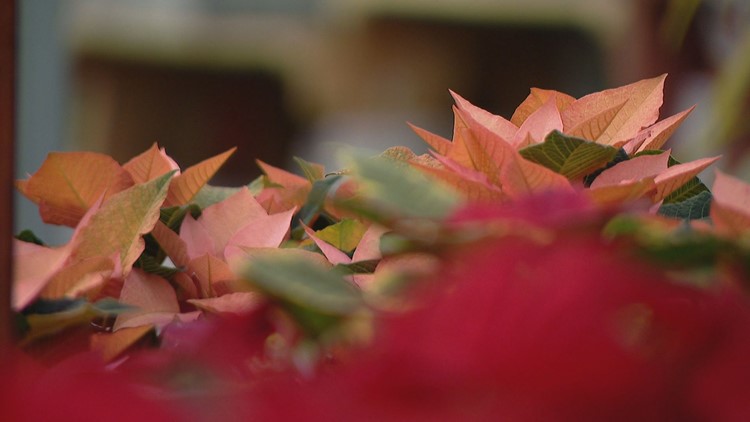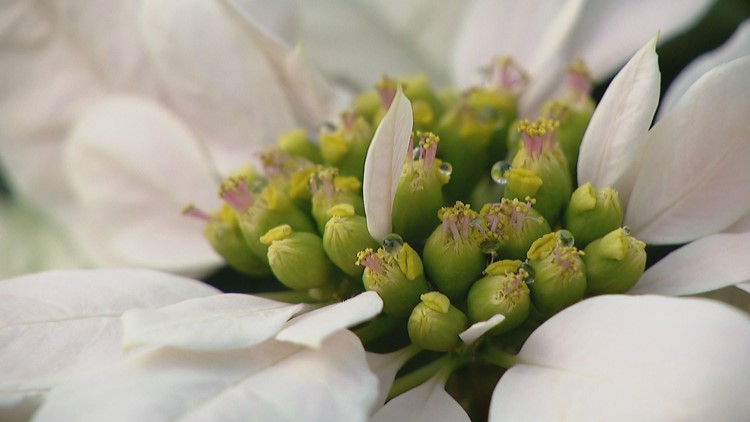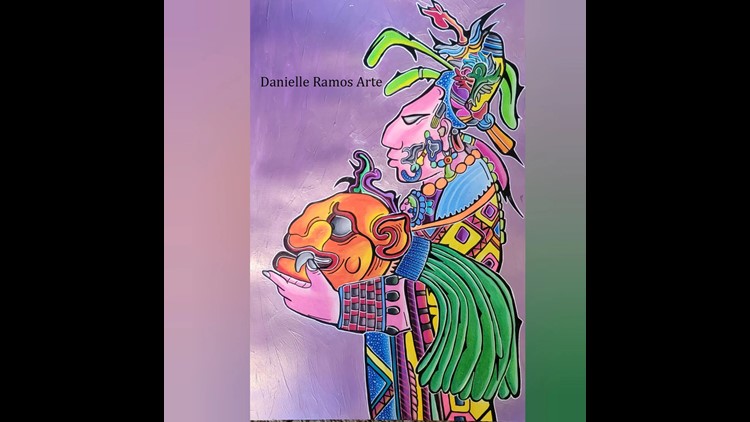ARVADA, Colo. — Poinsettias are a weird plant. They are pretty much everywhere during the holidays – and then poof, gone.
They are more than a decoration though, said Danielle Ramos, who works with these plants almost half of the year at Echter's Nursery and Garden Center in Arvada. It pains her to see them end up in the trash after holiday festivities are done because of the thousands of hours of work that goes into raising them.
"It's kind of buying something handmade from someone," Ramos said. "It's more about care and love for the plants."
Besides that, they are a plant, just like any other one. And even thought they are a little picky, Ramos has some tips on keeping them alive and thriving after of the holiday season.
How to care for a poinsettia plant
- Place it in a room with bright indirect light for about six hours a day, avoiding direct sunlight. Bright indirect or diffused light is best.
- Avoid hot or cold drafts, excess heat from appliances, fireplaces, radiators or ventilating ducts. Maintain temperatures between 65 degrees F and 75 degrees F.
- To prolong the bright color of the bracts, ensure temperatures do not exceed 72 degrees during the day or drop below 60 degrees at night.
- Keep the soil moist. Overwatering can be detrimental. Wilting leaves and rotted plant roots are signs of overwatering.
- Water the plant when the soil surface feels dry to a light touch or the pot feels lightweight when lifted. Avoid letting the poinsettias become so dry that they wilt.
- Remove from decorative foil or outer pot before watering. Ensure the plant is in a pot that drains freely. Water the plant thoroughly in a sink, allowing it to drain completely. Never let poinsettia pots sit in excess water, as it can cause root rot.
The Journey of a Poinsettia Plant
Tips for reflowering a poinsettia
- December: Full bloom. Water as needed.
- Late March to early April: Color fades. Keep near a sunny window. Trim stems back to about 8 inches. Water as needed and fertilize with a well-balanced, all-purpose fertilizer. Around May, expect new growth.
- June 1: Repot if necessary in a well-drained potting mix. You can place your plant outside, provided night temperatures are consistently above 55 degrees and it's shielded from the hot sun.
- July-August: Pruning may be necessary to maintain a compact, bushy plant. Avoid pruning after Sept. 1.
- Starting Oct. 1: Provide complete and continuous darkness for 12 to 14 hours at night along with 6 to 8 hours of bright light during the day. Even stray light, like street lights or household lamps, may hinder the re-flowering process.
- November and December: Around the last week of November, discontinue the darkness treatment. The plant should be near a window, showing flower buds. Stop fertilizing by mid-December. Keep watering and care for your plant as when initially brought home. If done correctly, bracts should begin to show color.
- Remember: Success lies in carefully following the specific light-dark requirements.
- Once your poinsettia is in full color, stop fertilizing until it loses its color, and the cycle restarts in March.
Poinsettias
Ramos considers herself a plant lover and a plant nerd and has been known to keep her poinsettias going after the holiday season is done. Ramos said these plants also have a history that most people do not know about.
"They weren’t originally for Christmas, and they’ve been used for thousands of years medicinally," Ramos said. "They originally come from Mexico, and they were originally cultivated by the Mexica – most people know them as the Aztecs.
"They change colors during the winter solstice, so it symbolizes purity and change and their main god, the birth of him," she said.
They were brought to the United States in the 1800s by an ambassador and became a plant that was popular around Christmas because it changed colors during that season.
"To them, it’s just a Christmas plant," Ramos said. "But to this day, it’s a really important plant to indigenous people."
Ramos pays tribute to the plant and indigenous gods through her other passion: art.
"I'm Hispanic, I relate to them and their stories," Ramos said. "I'm really big on keeping traditions alive."
Artist Danielle Ramos
SUGGESTED VIDEOS: Feature stories



